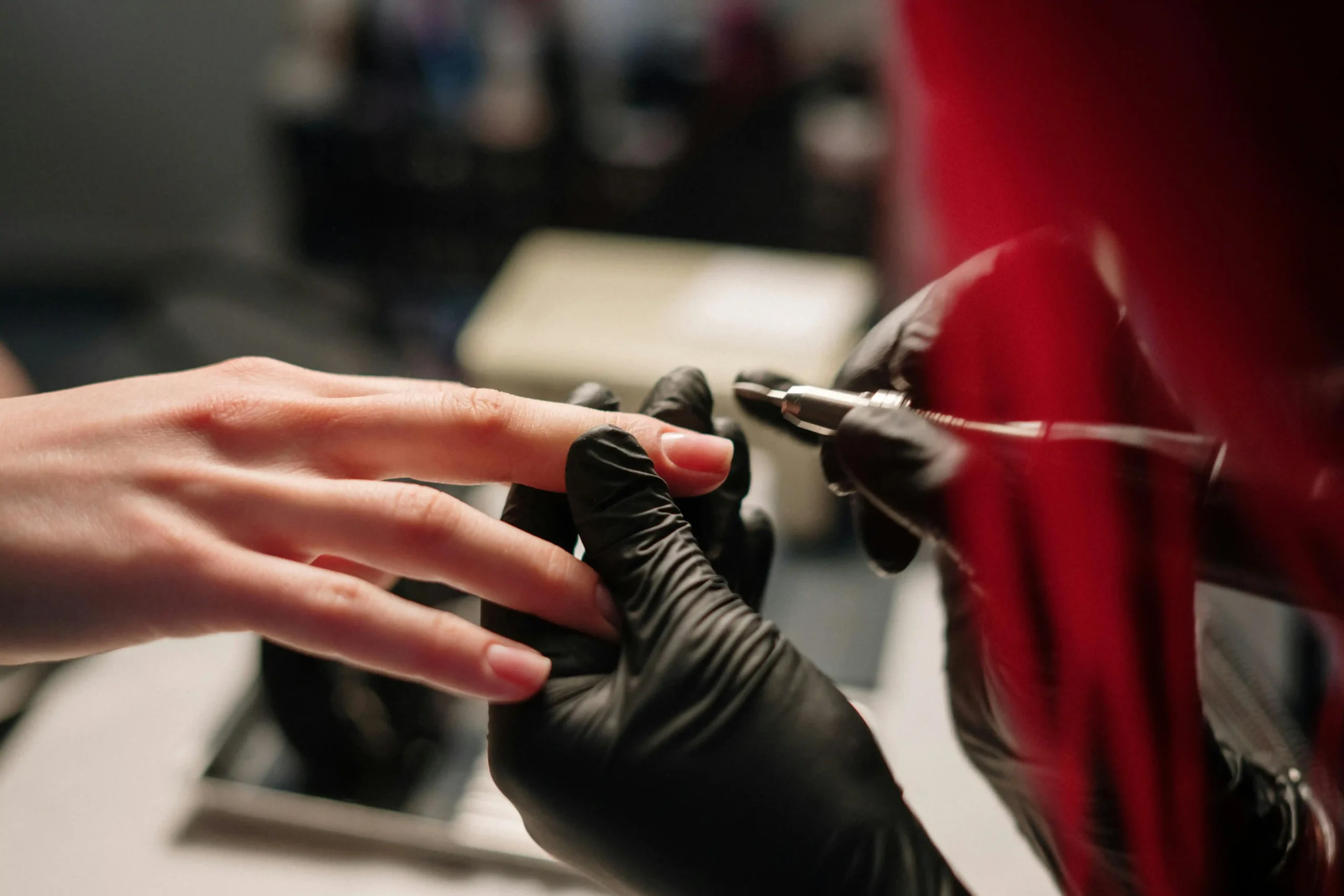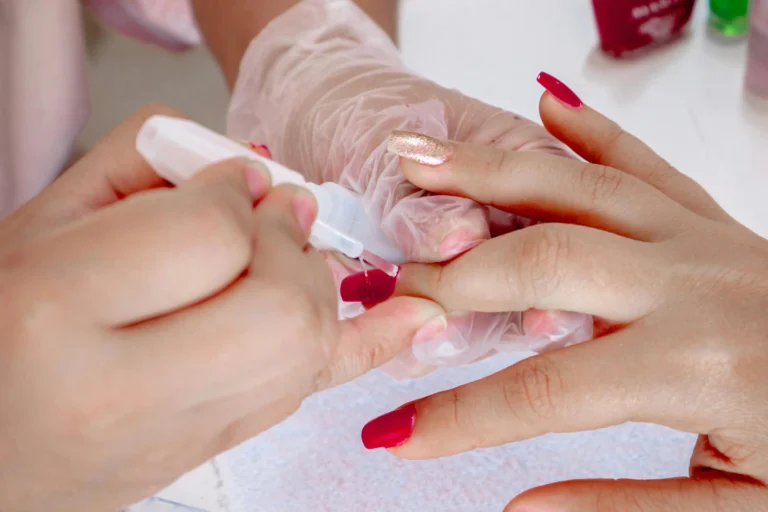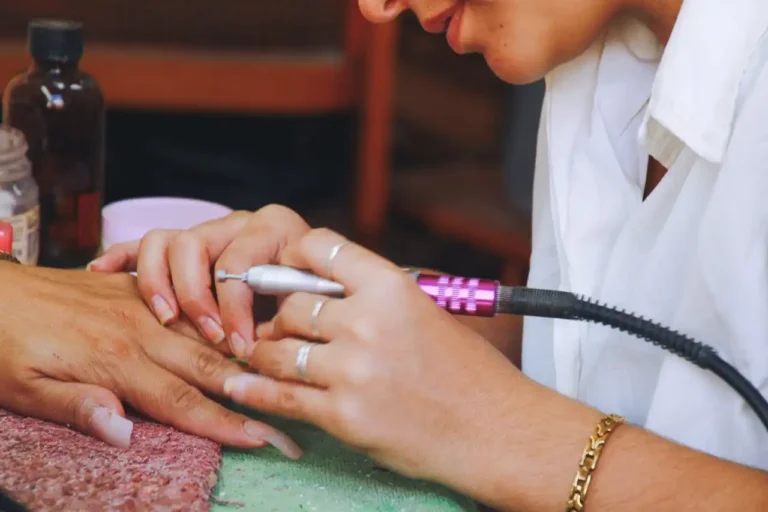The Right Way to File Your Nails (You Might Be Doing It Wrong)
You probably think filing your nails is straightforward—grab a file and go to town, right? Wrong.
Most people make critical mistakes that weaken nails, cause splits, and ruin manicures. The good news?
Once you learn the proper technique, you’ll transform your nail game completely.
You’re Probably Using the Wrong Filing Motion

Here’s the biggest mistake almost everyone makes: filing back and forth like you’re sawing wood.
This see-saw motion creates tiny tears in your nail plate that eventually become splits and breaks.
You might not notice the damage immediately, but over time, this technique destroys your nails from the inside out.
The correct approach involves filing in one direction only.
Start at the outer edge of your nail and file toward the center, lifting the file completely before starting the next stroke.
This technique preserves the integrity of your nail’s structure and prevents those frustrating splits that seem to appear out of nowhere.
Think of your nail like delicate fabric. When you file back and forth, you’re essentially fraying the edges.
But when you file in one direction, you’re creating a smooth, sealed edge that stays strong and healthy.
Your File Choice Makes or Breaks Your Nails

Not all nail files are created equal, and using the wrong one can damage your nails significantly.
Those metal files you might have lying around? Toss them immediately.
They’re too harsh for natural nails and create microscopic tears that lead to weakness and breakage.
Glass files are your best friend for natural nails.
They create incredibly smooth edges and last practically forever.
The surface is fine enough to seal your nail edge while you file, preventing those annoying snags and catches.
Plus, you can wash and sanitize glass files easily, making them more hygienic than other options.
Emery boards work well too, but choose ones with a fine grit.
Look for files labeled 240 grit or higher for natural nails.
Anything coarser will roughen your nail surface and cause damage. If you have weak or thin nails, stick to 400 grit or finer.
For artificial nails or extremely thick natural nails, you can use slightly coarser files, but never go below 180 grit.
Remember, you can always file more, but you can’t undo damage from an overly aggressive file.
The Pressure You Apply Changes Everything
Most people press way too hard when filing their nails. You might think more pressure equals faster results, but it actually causes more harm than good.
Heavy pressure creates heat through friction, which can damage your nail plate and make it more prone to breaking.
Use light, gentle pressure instead. Let the file do the work for you.
Think of it like stroking a cat—firm enough to be effective, but gentle enough to avoid damage.
This approach takes slightly longer, but your nails will thank you with improved strength and appearance.
You should barely feel resistance when filing.
If you’re pressing hard enough to see your nail bed change color or feel uncomfortable, you’re applying too much pressure. The filing motion should feel almost effortless.
Pay attention to how your nail feels during filing. If it starts to feel warm or if you notice white residue building up quickly, you’re being too aggressive.
Take breaks and let your nails cool down between filing sessions.
Shape Matters More Than You Think

The shape you choose affects both the appearance and strength of your nails. Round shapes are the strongest and most practical for everyday activities.
They follow your natural nail bed curve and resist breaking better than other shapes.
Square shapes look modern and clean but require more maintenance.
The sharp corners are prone to catching and breaking, so you’ll need to file more frequently to maintain the shape. If you choose square, slightly round the corners to prevent snags.
Oval shapes offer a nice compromise between round and square. They elongate your fingers while maintaining good strength.
This shape works particularly well if you have wider nail beds or shorter fingers.
Stiletto, coffin, and other dramatic shapes look stunning but require strong, healthy nails or artificial enhancements.
These shapes concentrate stress at specific points, making breaks more likely if your natural nails are weak or brittle.
Timing Your Filing Sessions Correctly
When you file your nails matters just as much as how you file them.
Never file immediately after a shower, bath, or washing dishes.
Wet nails are softer and more prone to damage. Water makes your nail plate swell slightly, and filing in this state can cause uneven results and increase breakage risk.
Wait at least 30 minutes after water exposure before filing.
Your nails need time to return to their normal moisture level and firmness. This waiting period ensures you get accurate results and avoid damaging softened nails.
The best time to file is when your nails are completely dry and at room temperature.
Many nail professionals recommend filing in the evening when your hands have had time to dry out from daily activities.
If you must file after water exposure, gently pat your nails dry and wait as long as possible.
Even 10-15 minutes of drying time is better than filing immediately.
The Prep Work Nobody Talks About
Before you even touch a file to your nail, you need to prep properly. Start by removing any old polish completely.
Nail polish can mask the true shape and length of your nails, leading to uneven filing.
Push back your cuticles gently or use a cuticle remover to soften them.
This step helps you see the actual nail shape and prevents accidentally filing into the cuticle area, which can cause irritation and infection.
Clean under your nails thoroughly to remove dirt and debris.
This cleaning prevents contamination and gives you a clear view of what you’re working with. Use a soft brush or orange stick for this step.
Take a moment to assess each nail individually.
Look for weak spots, existing damage, or areas that need special attention. Planning your approach prevents mistakes and ensures even results across all ten nails.
Post-Filing Care Seals the Deal
What you do after filing is just as important as the filing technique itself. Immediately after filing, wash your hands to remove nail dust and debris.
This step prevents irritation and gives you a fresh start for the next steps.
Apply cuticle oil to nourish the nail bed and surrounding skin.
The filing process can be drying, and oil helps restore moisture while promoting healthy nail growth. Massage the oil in gently to improve circulation.
Follow up with hand cream, paying special attention to your nail area.
Well-moisturized nails are stronger and more flexible, making them less prone to breaking and splitting.
Buff very lightly if needed to smooth any remaining roughness, but don’t overdo it.
Over-buffing thins your nail plate and weakens the structure you just worked to protect.
Common Filing Mistakes That Ruin Your Progress
Filing too frequently is a major mistake many people make.
Your nails don’t need filing every few days unless you’re maintaining a specific shape for a special occasion. Most people should file every 1-2 weeks, depending on their nail growth rate.
Starting with nails that are too long creates unnecessary work and increases the chance of uneven results.
Trim long nails with proper nail clippers before filing to achieve the length you want more efficiently and safely.
Ignoring your non-dominant hand leads to uneven results. Take extra time and care when filing your dominant hand’s nails.
Go slowly and check your progress frequently to ensure symmetry.
Filing in poor lighting makes it impossible to see what you’re doing clearly. Always file in bright, natural light when possible.
Poor lighting leads to uneven shapes and missed spots that you’ll notice later.
Tools and Maintenance for Long-Term Success
Invest in quality tools that will last and perform well.
A good glass file might cost more upfront, but it will last for years and give you better results than cheap alternatives.
Quality tools make the entire process easier and more effective.
Keep your files clean and in good condition.
Wash glass files with soap and water after each use. Replace emery boards when they become worn or clogged with nail dust.
Dull files require more pressure and cause more damage.
Store your files properly to maintain their effectiveness. Keep them in a clean, dry place where they won’t get damaged or contaminated.
A dedicated nail care kit helps you stay organized and ensures your tools are always ready to use.
Consider having multiple files for different purposes.
A fine file for regular maintenance, a slightly coarser one for major shape changes, and a buffer for smoothing can cover all your filing needs effectively.
Building a Sustainable Nail Care Routine
Consistency beats perfection when it comes to nail care.
Regular, gentle maintenance is far better than occasional aggressive filing sessions. Build filing into your regular self-care routine so it becomes automatic.
Keep a file in your purse or desk drawer for emergency touch-ups.
A small chip or snag can quickly become a major break if left unaddressed. Quick maintenance prevents bigger problems later.
Pay attention to your nails throughout the week.
Notice changes in strength, flexibility, or appearance. Early intervention prevents minor issues from becoming major problems that require drastic measures.
Track what works for your specific nails.
Everyone’s nails are different, and what works for others might not work for you.
Experiment with different techniques and products to find your perfect routine.
Conclusion
Master these filing techniques and your nails will become stronger, healthier, and more beautiful than ever before.







